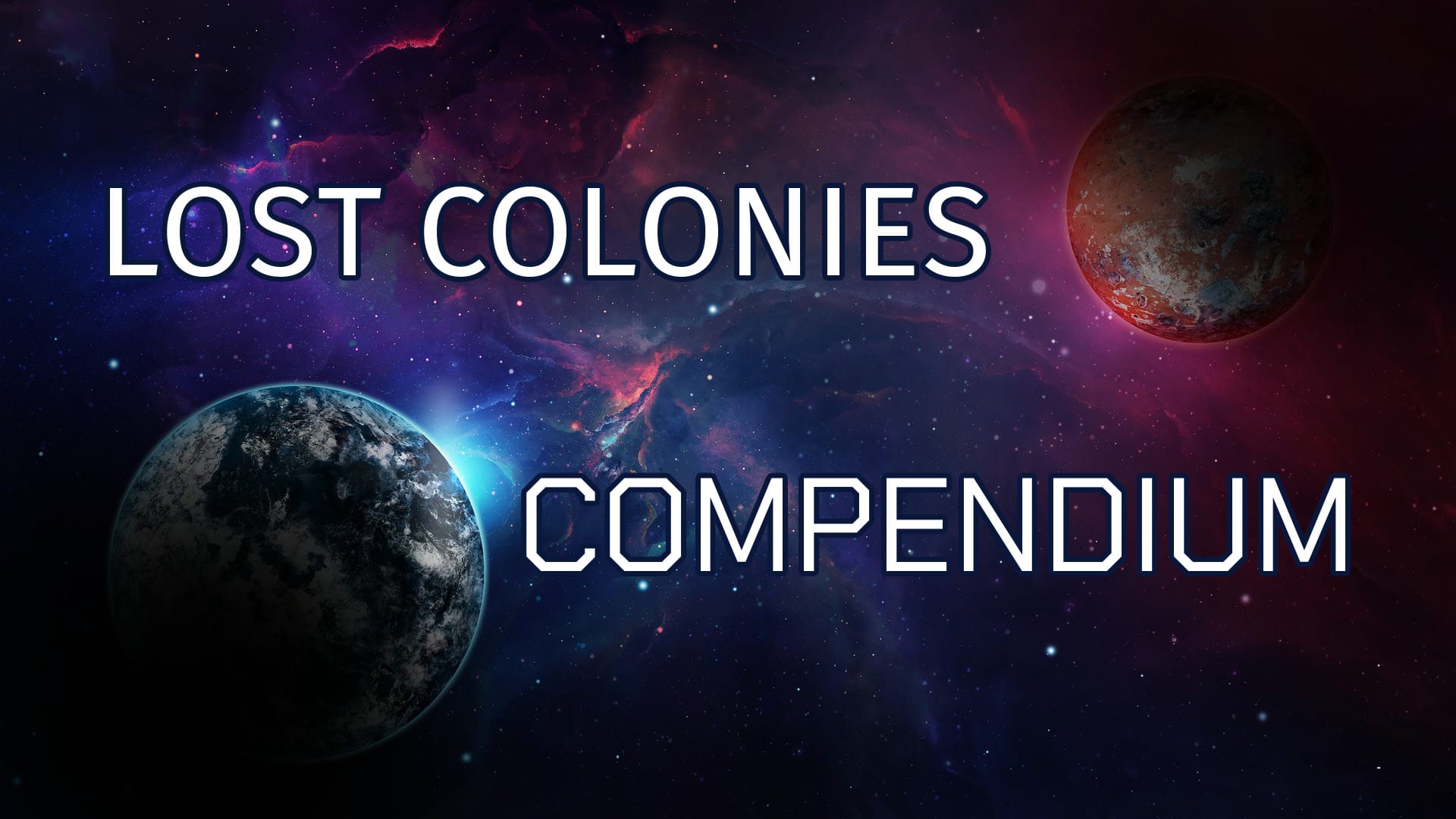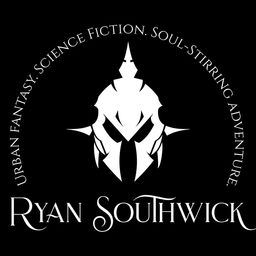World Building
Different approaches to building your world and bringing it to life without overwhelming your reader.

World building as it applies to fiction is the oft-unappreciated process authors go through of detailing their world to create believable settings for their story. For some, this may be a couple of sentences on the back of a tear-stained cocktail napkin. For others, it’s a culmination of months or years of research that could be a book unto itself.
This post attempts to demystify the work behind the curtain and hopefully provides guidance for new authors who have a brilliant story idea, but no clue where to start.
Design Approaches
These general techniques apply as much to world building as they do the writing process itself, and to many other things in life.
Up-Front Design (kitchen sink / planner)
If you’re the kind of person who likes to plan your entire week in advance—and who becomes anxious when said plan is interrupted—then up-front design might be for you. This is where authors take the time to sketch out every important aspect of their world often before writing a single word. It requires time, effort, and a lot of imagination, but brings the comfort of certainty when it comes time to start the first draft. Every detail about the world the characters live in has already been accounted for and documented. Authors who prefer this method of world building will probably also have detailed plot outlines and character dossiers. All that is left is to finish the story is coloring by number.
An advantage of this approach is that very little is left to chance. The writing process is often smooth because the characters’ fate and all the surrounding details have already been accounted for, dramatically reducing the chance of writer’s block.
One disadvantage is that it might be a very long time before your characters come to life. Accounting for everything in a world is a lot of effort, perhaps more effort than necessary, since you may end up accounting for details that don’t end up affecting the actual story (“waste,” in Lean Manufacturing terms, since the story is your end product). Other risks are that, when you actually begin writing your story, the world evolves in ways you hadn’t predicted, invalidating key pieces of your meticulous design. This may require another design iteration for your world, or require you to rewrite some (or most) of your manuscript to make it fit with your original vision. Or in the worst case, you may decide to move forward knowing there are logical gaps or inconsistencies in your story, which risks breaking the reader’s trust.
Emergent Design (organic / pantser)
This is the opposite of up-front design. You have a basic idea of the setting and a few thoughts on characters, then you just start writing, trusting that necessary details will emerge as the story progresses, and only do research when you hit parts of your story where you’re unsure.
Sounds efficient, right? Well…
One problem with emergent world building is that, since you don’t really know where you’re going when you begin, the great ideas you had in the beginning of the story may not meet the needs of your story later on. A major revision isn’t just likely, it’s practically guaranteed. Inconsistencies will abound. You’ll add really cool details to your world later in your book that affect the beginning, requiring a thorough comb-through to update references for consistency. A few passes may be required to catch them all, and if you’re trying to hold those details in your head and not documenting them as you go (you should be documenting them), you risk forgetting or mis-remembering details within and between passes, which may require an extra few passes just to ensure consistency.
Hybrid (plantser)
You might be thinking there must be a middle ground that offers the benefits of both. Why yes, there is!
NASA’s famous Cone of Uncertainty claims the farther out a deliverable is, the less certain its fate. This applies to delivery dates as well as the details of the deliverable itself. Agile software development accounts for this by keeping the backlog of deliverables high level, often at the epic level, breaking only closer deliverables down into stories and tasks. The close deliverables are clear, run less risk of changing, and are therefore worth putting the effort into. Far deliverables are left vague, knowing that deliverables between now and then—along with outside factors that can’t be predicted—may significantly change over the course of development. Investing too much time into breaking those distant deliverables is likely a waste, since you’ll probably have to re-write them anyway.
The same philosophy can be applied to world building (and plotting). Imagining every aspect of your world can be difficult until you’ve actually spent time there, i.e. written a few chapters of your manuscript, where worlds often spring to life with vibrant color, and not always in the way you originally imagined. Put just enough detail in your world bible to get you started, answering the critical questions keeping you up at night, then fill in the rest as your characters encounter each new area and scenario. As authors, we rely on readers’ imaginations to turn our words into vivid, living worlds. Provided enough scaffolding, we should rely on ours as well.
If you can’t tell, this is the method I’ve found most useful. I’ll spend anywhere from a few days to a few weeks filling my world bible with details I believe will be relevant, using The Leviathan Method as a rough guide (see below), create a high-level story outline consisting of no more than fifteen cards, then start writing. By the end of a book, my story bible can be 2-4 times larger than when I started, more for a series. I use the world bible exclusively for fact checking myself on edits, which forces the bible to become my single source of truth. This saves me from hunting through hundreds or thousands of pages for world facts on subsequent edits.
Governments
If you’re writing science fiction, chances are the governments your characters face will be far different from those of Earth today.
Or will they? History tends to repeat itself, as much as we wish it wouldn’t. Governments of the future may look very similar to contemporary models—or worse, which touches on the true power of science fiction. Authors can play with variables, add or remove the constraints of today, then extrapolate the possibilities into an entertaining story that may also serve as a warning. What would happen if that totalitarian government actually did take over the world? What would life be like for your average citizen? Who would the government pin as “the enemy” to distract the populace from their own dire situation and keep them from revolting? What if you add aliens to the mix? Super-science? Space travel? Time travel?
Even if we were political science majors, which most authors aren’t, no one can predict with certainty. But we can imagine, and we can allow readers to walk in a character’s shoes to experience a possible future, painted as realistically as we can.
The best way to create a fictional government, then, is to first decide what morals or themes best fit your story (or that you would like to explore). Pick an existing government as a base, plug in the variables of your world, then let your mind wander for a bit in that new world. How would the government react? Would they tighten the reins on their citizens? Loosen them? How would that look? Would it create new class divides? New prejudices? How would the technology or magic of that time affect their military or policing practices? Is it a big brother society? Or have they evolved beyond that and secured the privacy and freedoms of the citizens?
Two good sources for choosing a base government model are, of course, Wikipedia and the Government Types listing in US Central Intelligence Agency’s World Factbook. From there, depending upon your familiarity with that government type, you may need to do more research, but it should provide a good starting place. Be sure to add the notes to your world bible.
Balance
One thing role playing games taught me is the importance of balance. If the player characters are too powerful, combat becomes dull because they breeze through every encounter. If the enemies are too powerful, the party dies and the campaign is over, or the players become very frustrated and stop having fun.
World building is the same. Everyone loves to root for the underdog, but if your world is designed such that the odds are stacked too high against your protagonist, you as the writer may find it difficult to imagine a plausible way for them to succeed, or if they do, it may come across as deus ex machina to the reader because it will feel unrealistic, or detract from the protagonist’s triumph because they had too much help. Likewise, watching an overpowered hero trounce their way through a series of unchallenging conflicts, physical or otherwise, is a sure way to put your readers to sleep.
Many protagonists have something that gives them an advantage over everyone else. This might be as simple as an insight or birthright, or it could be a power, artifact, or piece of special technology. For the latter cases, consider adding a cost. Maybe the protagonist can mind control others, but doing so for too long risks a hemorrhage in their own brain. Their special technology may have a limited number of charges, or it could attract hostile critters or give away their location to the enemy. This sort of balance creates tension every time the protagonist uses their gift, as well as conflict for the character deciding if and when to employ their advantage.
Perhaps your protagonist is on a true hero’s journey, on the path to godhood. Things that challenged them in the beginning of the book may be laughable near the end. Awaiting such heroes should be challenges to match their new abilities. More powerful foes. More dangerous environments. More complex puzzles. And, of course, higher stakes. Much of this will come back to your world design. Springing a new hazard on a hero out of the blue can feel contrived to readers. Ideally, there should be foreshadowing so that when the encounter happens, it already fits with what the reader knows, and feels like a seamless transition to the story while still being shocking and tense. Building some basic balances into your world design can save you a lot of rewriting and help keep the reader’s trust.
The Leviathan Method
Kitty Chandler created a series of world-building questions on her website—dubbed the Leviathan Method—that cover almost every aspect of any new world an author might create. Feel free to peruse. I’ll wait.
If this is your first time building a world, you might be ready to throw in the towel. That’s a lot of information, covering subject areas in which most of us have no expertise.
Yes, it is a lot. The good news is that you don’t have to answer them all. For those questions that are relevant, most only take a sentence or two. Others may require pages to answer, depending upon the focus of your story (magic systems can be entire books on themselves).
Answer what you feel is most relevant to your story. Research what you’re unsure of, but feel is critical. Revise your answers as you answer more questions and solidify the vision of your world. Continue to refine and add to it as your manuscript progresses. The point of this exercise is to help you paint a consistent and believable setting for your characters. It can also serve as an invaluable reference in the long periods between edits and (fates willing) sequels in your series.
Thankfully, if you’re a Scrivener user, Belinda Crawford has created an excellent template based on the Leviathan Method to organize all the information in one place. This is my go-to when creating a new world bible.
Bringing Your World To Life
Great! You've picked a world-building approach that works for you. It's time to start writing! Whether you're working from a detailed bible or getting ready to fill one out, it means nothing if you can't put your reader there. The art of descriptions could fill a book, for which this post is no substitute, but let me share some tips that have worked for me.
Building the Muscle
As the saying goes, the best way to learn how to write is to do it. Don't be disappointed if your first attempt isn't Jane Austen; I promise you that her first attempt wasn't, either.
It may feel difficult at first. Taxing. You might wonder how you can fill an entire book of this stuff without keeling over from exhaustion.
The answer is simple: Practice. Start writing your manuscript. The descriptions may be awkward or missing. No problem, that's what edits are for—but don't let it stop you from writing, otherwise you never will. Get critiques from friends or your local writing group. Write short or flash fiction. Carve time out during the day to scribe your surroundings on paper. Pay attention to how other authors do it in the books you read, and make note of what you like and don't like. (Yes, as an author, you should absolutely be a reader, too. If not, I strongly suggest making time for it.) Emulate them, if that helps.
The more you do it, the easier it will become, and your own unique style will emerge. But only if you put in the time.
Breathing Life Into Your World
You have a great world idea, but how do you bring it alive for the reader?
If your world is mostly contemporary, it doesn't take much. Make sure the reader knows it's a contemporary story. From there, simply telling them they're in a chrome-laden 50's diner should be enough, saving finer details for settings that play a significant role in the story.
It's not as easy if your story takes place in a human colony on the other side of the galaxy 10,000 years in the future. Technology is radically advanced. Flora and fauna may be dramatically different from Earth's, or non-existent, giving the entire planet a different smell, and a vastly different appearance. Gravity may not be the same. Extended day/night cycles might have triggered evolutionary adaptations, such as globally darker or lighter skin—and that doesn't begin to cover social differences, military, police, and everyday life. 10x those deltas if you're portraying an alien civilization.
Good golly, where to even begin?
You might start with a short slice-of-life narrative that walks the reader through a minute or so of everyday life for the protagonist. Call out the sights, sounds, and smells as they stroll down the street to whatever encounter you intend to hook the reader with. Focus on the differences between your world and the reader's. If your protagonist lives in this environment, it will be completely normal to them and should be worked in gradually through casual observations. If they're new to the environment, it becomes very easy to work in world details as internal compare-and-contrast monologue.
Or you might start with nothing. Let the reader experience the protagonist as an average person, and gradually reveal the world around them. Don't take too long, however. The reader should have a solid idea of where they are and who/what the protagonist is by the end of the first chapter, otherwise they might lose interest because they can't picture themselves there.
The list is infinite, but here are a few things your protagonist might observe:
- Fashion (colors, style, material, feel, wear, special properties)
- Language (accents, local idioms, curses, education levels)
- Architecture
- Vehicles (propulsion, sound, speed, capacity, automated or piloted. Does everyone have one, are they only for the rich? Public transit?)
- Technology (What is it? Why is it important? Who makes it? Commodity or luxury? Get creative. Reflect its effect on everyday life or society at large)
- Magic / special abilities (Commonplace or rare? How has it affected society? Does the protagonist have any? Do they want to? How do they view mages? Associated visuals? Smells? Sounds? Side effects?)
- Animals (smells, purpose, looks, rarity, disposition)
- Flora (looks, smells, tastes. Is your world lush or barren? Are plants green, like on Earth, or a different color? Are they edible? Dangerous?)
- Social norms (verbal greetings, physical greetings, friendly or isolated, is touching okay or shunned, classes and interactions)
- Government (do police openly carry weapons? Is it unpoliced? People's attitude toward authorities? Politicians? Democracy, autocracy, etc? How does that affect people's daily lives? Are they happy? Depressed? Guarded?)
- Population (dense, sparse, rural)
- Economy (barter system, currency, names of coins / bills / other, relative value [i.e. how much for a sandwich?], distribution of wealth)
Less is More
Describing a new setting doesn't have to fill three pages. Your world is a backdrop for the story, not the story itself. Huge description blocks or explanations of world mechanics can stagger the momentum you've built to keep the reader hunkered under the covers with a flashlight until 3 am because they can't put your book down.
A beta reader recently sent me this along with their feedback:
You may note that I'm over three weeks early with my reading time assessment. My sleep and hygiene have suffered, and I have been eating junk food at my desk so as not to take cooking breaks. Shame on you.
Yes, I felt shame, but it also made my week. This is the kind of reaction I craft my books around; why I mercilessly cut sentences, paragraphs, entire chapters—and yes, descriptions—that don't explicitly move the story along.
Some tips for keeping it short, and your story moving:
- Readers should only know 10% of what the author knows. The reader doesn't need to become an expert on your world's economy unless those details are crucial to the main conflict. Tell them just enough to put them there, and only when the situation demands. Trust their imagination to do the rest.
- Limit introductory descriptions to one sentence, two at most. Sprinkle the rest throughout the dialogue and narrative—but keep those descriptions short, too.
- Use comparisons and stereotypes. While shunned by some experts, when properly used, they are powerful literary tools that convey volumes in very few words. For a minor character, simply labeling them as a waiter might be more than enough.
- Focus on what the POV character would notice. If your protagonist is a vampire, perhaps they experience the world nose-first, starting with a person's blood type, and visual details are a distant second. Be creative and judicious.
- Don’t endlessly repeat details you feel are important. Once or twice is all most readers need. More can be perceived as annoying.
- Let alpha and beta readers tell you where more clarity or reminders are needed. Be conservative in your manuscript and ask for this as a specific point of feedback.
- Limit flowery prose. Most people appreciate a poetic description, but 400 pages of them can become wearing and distract from the real focus: your story! Prefer simple descriptions, reserving the flowery stuff for special occasions. Doing so will also make them stand out more.
Supplemental Material
Okay, fine, you shouldn’t put every detail of your glorious world in your manuscript, but that doesn’t mean you can’t share it in other ways. Create a companion book that readers can optionally reference. Post a compendium online for readers who are hungry for more, or to excite potential readers about the richness of your story. Add tantalizing tidbits of your world into your newsletter, blog posts, and social media. Many readers won’t give it the time of day. Some will be enticed to learn more. Die-hard fans will revel in the additional insights into their favorite story of all time, and become even more loyal.
You put in the work, now let it work for you.
Here's an example compendium from my own Lost Colonies science fantasy series:

Resources






